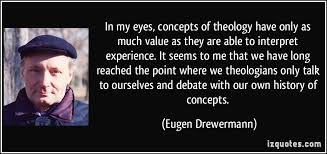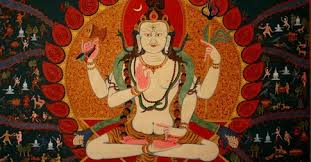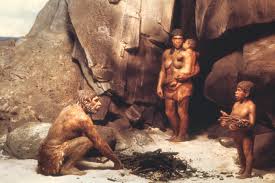Dr. V.K.Maheshwari, M.A(Socio, Phil) B.Sc. M. Ed, Ph.D
Former Principal, K.L.D.A.V.(P.G) College, Roorkee, India
If we study Greek philosophy from its mythological beginnings down to its decline into theosophical speculations and fantastic cultus. We found it turning, at the end, to the problem of man’s origin and destiny, his relation to God and the world, his fall and his deliverance from sin. The interest in such questions grew intense during the days of the Roman Empire, among philosophers, and among the educated classes in general, as the great popularity of the Oriental religions and of the systems of thought influenced them enormously. The Greek mind had lost its originality and vigour, and it was impossible to revive the corpse of philosophy by breathing into it the spirit of” Orientalism.”
During the last period of Hellenic speculation, a new religion which possessed many elements to recommend, was making converts in the Roman world. This religion, which had sprung from the soil of Judaism, preached the gospel of a father-God who is merciful and just and loves all his children alike, and promised the redemption of mankind through Jesus Christ, his Son. , Christianity struck a popular chord and satisfied a longing of the age. The conditions of deliverance were not made dependent on external and accidental goods, but on change of heart, repentance, and love of God and man.
It taught that no man was too low to be saved, that there was hope for all, that Christ would come again to establish his kingdom, first on earth and then in heaven, but, whether on earth or in heaven, it would be a kingdom of righteousness and love. It taught that, on the judgment day, the wicked, rich and powerful though they might be, would be confounded, and the pure in heart, however poor and lowly, would enter into glory. In offering deliverance from the sinful world and a future life of blessedness.
The Pharisaic conception of the righteousness of the letter is transformed by the founder of Christianity into the doctrine of the righteousness of the spirit. What is done should be done from love and worship of God and not from fear; purity of heart is of more avail, in his sight, than external observance of rules and practices, the inner spirit of greater worth than outward forms. There is but one way of reaching salvation and that is to rid oneself of evil passions, of envy, anger, hatred, and revenge ; to forgive even those that hate us, for it is better to suffer wrong than to do wrong. Love and forgiveness take the place of hate and revenge; man shall love his neighbour as himself, and every human being is his neighbour.
With its spiritual monotheism, its doctrine of a life to come, its gospel of love, and the example of the suffering Christ, the new religion appealed to the Roman world. And as the number of its converts increased among the cultured classes, it could not ignore the philosophical conceptions rooted in the civilization in which it had to make its way. Indeed, Christianity, as it appeared in Palestine, owed its origin, in part at least, to this civilization; Judaism had not been able to resist the influences, ethical, political, social, religious, and intellectual, which pervaded the great Roman Empire ; and the Christian revolt was one of the results. The new world-religion was based on the growing spirit of cosmopolitanism and brotherhood, which Stoicism had done so much to inculcate; the conception of a spiritual deity taught by the philosophers; the doctrines of immortality contained in the popular Greek mysteries and Oriental religions; and the Jewish ideal of a personal God which succeeded in awakening the religious spirit where the abstract notions of the metaphysicians had failed.
Christianity was, in a measure, a child of its age, a child of Judaism and Hellenic-Roman civilization. But the influence of the age did not cease with its emergence into the world ; in addressing itself to the Greeks and Romans of the times, it gradually assimilated the culture of the world to which it brought its tidings. Had the Jewish-Christian section of the new religion, which interpreted it as a phase of Judaism, triumphed, it is not un- likely that Christianity would have been buried beneath the walls of Jerusalem.
In order to deliver its message effectively, Christianity had to solve a number of important problems. It had to justify its ‘ faith to reason, to defend itself against the attacks of the publicists and philosophers who in time came to take notice of it, and to show the reasonableness of its teachings. It was necessary for its leaders to meet their opponents on their own ground, to make use of the philosophical conceptions familiar to their minds, to fight them with their own intellectual weapons, their own philosophy. Such defenders of the faith, or Apologists, came when they were needed. But it also became necessary to define the creed, to formulate articles of faith, to establish a body of doctrine or dogmas. Here, again, minds trained in philosophy were of service in giving rational expression to the traditional beliefs of the Christian communities; and in this work, also, Greek thought exercised a significant influence on Christianity. The dogmas were officially defined by the great councils of the Church, but before agreement could be reached, much work had to be done: many solutions were offered and rejected, and many interpretations of the faith struggled for the victory. The victorious creed became the orthodox creed, and the thinkers who played important parts in defining it were called Fathers of the Church.
After the establishment of the fundamental doctrines and the triumph of Christianity as an organized State Church, came the period of philosophical construction, the elaboration of a philosophy the subject-matter and guiding principles of which were determined by the dogma. This philosophy, which constitutes the largest part of the philosophy of the Middle Ages, or Christian Philosophy, had for its aim the exposition, systematization, and demonstration of the Christian dogmas, the construction of a theory of the world and of life on a Christian basis. The thinkers who performed this service were called Schoolmen and their systems Scholastic Philosophy.
In all the cases we have mentioned, Greek philosophy was drawn upon for help in the solution of the problems. But the attitude of mind was not that of the ancient thinkers: their object had been, in the main, to give a rational explanation of the universe independently of the popular religion; they approached the task in a more or less scientific spirit, often even in a spirit antagonistic to the prevailing creed. The School- men, on the other hand, accepted the truths of Christianity as beyond dispute; these formed the starting-point and regulative principles of their speculation ; and these they sought to render intelligible and reasonable, or to prove. In order to succeed, they had recourse to such systems of Greek thought as best suited the end in view; with them, therefore, philosophy was placed in the service of religion; it became the handmaiden of theology.
“Within the limits set by Christian dogma, the mind was left free to exercise its skill ; so long as it did not conflict with established truths, human reason could interpret the world as it pleased. In the course of time, however, the intellect began to free itself from its theological tether and to seek satisfaction outside of the circumscribed territory ; the scholastic attitude and method proved unsatisfactory, and attempts were made to construct systems on a more independent basis. From another side objections were also urged against the entire rationalistic movement : the dogmas and the whole ecclesiastical system were criticised and the effort made to transform the inner religious life of the people, with the Bible and the conscience as the guide and standard. These tendencies towards reforming the theoretical and practical phases of organized Christianity culminated in the two great preludes to the modern era.
This new religion was soon compelled to define its doctrines, to defend them, and to construct a Christian theology declaring its attitude toward the prevailing Jewish and Hellenistic modes of thought. The system best adapted to the immediate purpose at hand, in the beginning of the Christian era, was the Jewish-Greek philosophy which we have already outlined. ” The allegorical explanation of the Old Testament became an indispensable means of combining the new faith with the old revelations,” says Zeller, ” and the logos-doctrine of Philo, which was fused with the Jewish-Christian Messianic belief, formed the centre of the dogmatic movement in Christian theology for centuries to come.”
We find the beginnings of Christian dogmatic theology in the writings of the Apostle Paul and his school. He was the first to offer a Christian theology or a philosophy of history on a Christian basis. The Epistles ascribed to him betray the influence of conceptions similar to those made use of in the so-called Wisdom of Solomon (doubtless known to him) and developed in the philosophy of Philo ; Christ is identified with God ‘s Power and Wisdom, the Logos ; he pre-existed as the archetypal man, but was created by God. The same notion is brought out in the Fourth Gospel, and in the writings of Ignatius .
In these ideas we have a fairly well-defined theology. The historical elements of Christianity are interpreted in the light of the Greek logos-doctrine; religious and philosophical elements are welded together in a way to emphasize the religious aspect: the Logos is a personality, the son of a living Father, not a cold philosophical abstraction. It was quite natural, however, that other thinkers, with a stronger bent for speculation, should have sought to interpret the new religion according to their philosophical preconceptions, to rationalize it, to transform faith into knowledge. This work was done in the second century by the Gnostics, as they have been called. Philo the Jew had inter-preted Judaism in the light of Greek philosophy, and had tried to reconcile the thoughts of the Greek metaphysicians with those of the Jewish teachers. The Gnostics endeavour to do the same for Christianity; they speculate upon their faith, and offer a philosophy of Christianity and a Christian philosophy, a harmony of faith and knowledge, religion and science.
We have here an embryonic scholasticism, crude and fantastic though it may be. It was asserted by these Christian Philonists, as we might call them, that their doctrines had been transmitted by Jesus to such of his followers as were able to receive them, that is, as secret or esoteric teachings for the educated. They taught that Christianity was an entirely new and divine doctrine, Judaism a corrupt form of religion, the revelation of an inferior being, and heathenism the work of evil spirits. The Jewish God, or Demiurge, they regarded as a false God, opposed to the kingdom of light, or the abode of the highest spirits, and to the true God. Christ, one of the highest spirits, entered a human body in order to free the spirits of light imprisoned in matter by the Demiurge. Those able to comprehend the genuine teachings of Christ become gnostics, or pneumatic beings, and are eventually delivered from their material bondage, asceticism being one of the means of escape.
Such as fail to free themselves from sensuous matter perish with it, while the literalists (psychic beings) go to the heaven of the Demiurge. The world is the result of a fall; matter is the principle of evil; the exoteric doctrine is contained in the creed, the esoteric doctrine is a secret tradition.
Chief among the Gnostics are: Cerinthus , Saturninus , and Valentine . The system of Marcion, who formed a church at Rome, and accepted as canonical the Gospel of St. Luke and ten Pauline Epistles, contains teachings resembling Gnosticism, but emphasizes faith instead of knowledge and cannot, therefore, be assigned to this sect.
It is evident, however, that the Gnostics were not equal to their task: instead of a philosophical system, they offered a ” semi-Christian mythology.” Besides, their doctrines were in conflict with the prevailing conceptions of the teaching of Jesus ; their repudiation of the Old Testament, their distinction between an esoteric and exoteric Christianity, their conception of Jesus as a man whose body is used by a heavenly Christ, a creature far beneath God and even beneath the angels, their belief in specially endowed natures or pneumatic beings, and their allegorical interpretations, were all antagonized by the Apologists and other conservative leaders of Christianity and denounced as heresies. At the same time, the Gnostic movement exercised a great influence on the new religion and its theology. It gave an impetus to the philosophical study of the faith or theology. Some of its fundamental ideas, which came from Greek philosophy, found their way into the works of the early writers of the Church, and so became a factor in the evolution of the dogma.
The Apologists did not differ from the Gnostics in their general aim to render the new religion intelligible; they, too, has appealed to philosophy in their efforts to defend the faith against the heathen as well as against the fantastic interpretations of Gnosticism. Christianity was, for them, both philosophy and revelation; its truths were of supernatural origin and absolutely certain, but they were rational truths, even though they could be comprehended only by a divinely inspired mind. In the words of Harnack: ” The conviction common to them all may be summed up as follows:
Christianity is philosophy, because it has a rational content, because it gives a satisfactory and universally intelligible answer to the questions which all true philosophers have endeavoured to answer ; but it is not philosophy, indeed it is the direct opposite of philosophy … in so far as it is revealed truth and, hence, has a supernatural, divine origin, upon which alone the truth and certainty of its teaching ultimately rests. ‘ ‘( Dogmengeschichte, p. 89 ; Outlines of History of Dogma, transl. by Mitchell, p. 121.)
The Apologists were acquainted with the literature and philosophy of their times and addressed themselves to the educated classes. Indeed, nearly all the early leaders of the churches were men who, after their conversion, took up the cudgels for the new religion and sought to win favour for it among their own people. This is why the philosophical element generally predominates in their writings, and why the purely religious phase is so often placed in the background.
The movement culminated in the catechetical schools, perhaps the first of which was established in Alexandria by Pantsenus, formerly a Stoic philosopher. The object of these schools was not only to defend the new religion and demonstrate its reasonableness, but to reduce the teaching to systematic form for the benefit of the clergy, whose duty it became to instruct the pagan and Jewish proselytes in the principles of the Christian religion. Origen, the greatest leader of the Alexandrian school, worked out a comprehensive Christian theology in which the influence of Neoplatonism, which had its home at Alexandria, is strongly marked.
The fundamental thought in the writings of the Apologists is this: The world, though perishable, exhibits traces of reason and order, and points to one eternal, unchangeable, good and just First Cause, the source of all life Teachings and being. This principle transcends all life and Apologists being : the sublimit, power, wisdom, goodness, and grace of God are beyond all human notions, beyond all description. Yet the First Cause of all creation must be rational; reason must always have been potential in him as a part of his inner nature ; and to the presence of Reason, or the Logos, in God, are due the order and purpose in the universe. In other words, and goodness lie at the root of the world, and God is the eternal and abiding principle in all change.
By an act of free will God emits the Logos: the Logos proceeds from him as the light proceeds from the sun. And as the light emitted from the sun does not separate from the sun, so the divine Reason does not separate from God in the procession ; by giving birth to the reason in him, God does not lose his reason; the Logos remains with the Creator, subsists with the source whence it sprang. At the same time, the Logos is conceived as an independent personality, identical with God in essence, but not numerically, a second God who has been eternally with God. The Logos became man in Jesus Christ, Christ being the incarnate Logos, ” the word made flesh/’ The Holy Ghost is another emanation from God ; i.e., the prophetic spirit, which springs from God, is conceived as an entity.
We have in these conceptions the personification of divine reason with which we have become familiar in the Greek philosophy of religion: reason is the organ by which the world is fashioned and through which God indirectly acts on the world. The transcendency of God is emphasized, and the attempt is also made to save the independence of the Logos: the Logos is conceived as eternally with God, as co-eternal with him, as the phrase goes, as potential in him, as identical with him in his very nature ; and yet the Father is said to be the source of his being and activity (Irenseus), hence he would seem to be subordinated to the Father, a creature. Moreover, he becomes a person by God’s will, which would imply that there was a time when he was not, which, again, would make him a creature. Origen undertakes to solve this difficulty by combining both ideas and teaching that the Logos is eternally created. The act of creation is not an act in time, but an eternally present one, the Son is eternally and continuously created.
The creation of the world is explained after the Greek models God is the ground and purpose of all things: from him they come and to him they return. The Logos, however, is the pattern, or archetype, or prototype, of all created beings; which means, everything is created in the image of reason and by the power of reason or divine intelligence. We may put it this way: the Creator fashioned the world from formless matter, which he created out of nothing, after a pattern or rational plan which he carried in his mind. This system of thoughts is conceived by the Apologists as a personal entity, which, as an active cause, forms, preserves, and controls everything.
Creation is the result of God’s love and goodness and for the benefit of man. According to the majority of the Apologists, creation is an act in time; according to Origen, God creates eternally, and creatures have always existed. The universe is for him, as it was for Aristotle, eternal, but the world now existing has had a beginning and will pass away, to be replaced by other and different worlds.
The world was made for the sake of man. The goal of man, however, is not this world, but the hereafter. Other-worldliness, world-flight, the withdrawal of the soul from the world of sense to God, is the highest good. The resurrection of the body and soul (or spirit) in some form or other, is taught by all the Apologists; sometimes soul and body are both regarded as mortal, immortality being bestowed on them as an act of divine grace, according to the works of the soul (Justin) ; sometimes man is held to possess, in addition to body and soul, a higher spirit which is immortal and through which body and soul share in immortality (Tatian) ; sometimes this spirit is said to be conferred from above upon those who control their passions.
Another teaching common to the Apologists is that of free will and the fall of man. God created spirits with the capacity to distinguish between good and evil and the power of freedom to choose between them. Some chose to disobey God, to turn flesh- ward and away from God, for which sin they fell to a lower level of life in carnal bodies. Man may regain his lost estate by leading a Christian life and through divine grace, through the revealed truth of the Logos. On the day of judgment, after a sojourn in Hades or Purgatory, the just will enter eternal life, and the unjust be forever rejected. Origen, how- ever, believed in the final redemption of all. The thought running through this teaching is that, in sinning, the first man or a heavenly spirit, as the case may be, brought sin into the world, for which mankind is suffering, but that there is hope for our ultimate redemption if we will only turn away from the things of sense and seek to be reunited with God.
The fundamental article of faith declares that the human race is redeemed by Jesus Christ, the Son of God, that the Son of God came to deliver man from sin. This simple proposition gave rise to a number of problems over which the Christian theologians debated for centuries to come, and which received official settlement only after long and bitter controversies. The proposition contained three important notions: God, Jesus Christ, and man. How shall we conceive God the Father, the Son of God, and human nature in the scheme of salvation ? How are these beings related to one another: the Father and the Son, or Logos ; the Son and the man Jesus ; and God and man ?
The logos-doctrine, which appears so prominently in early Christian theology, did not penetrate into the rank and file of the early Church. The simple-minded Christian of the first centuries, living in a polytheistic com- Doctrine munity, believed in the Father, Son, and Holy Ghost without interpreting his faith metaphysically; for him Jesus the man was somehow the Son of God, and the Holy Ghost another supernatural being: the metaphysical nature and relation of these beings to one another and to God, he did not attempt to fathom. The intellectual leaders of the Church in their endeavors to defend the faith against Gnostics and pagan philosophers, were carried farther and farther into the speculations of the Greek schools, until they finally hellenized the Gospel. It was quite natural that the logos-doctrine should have met with serious opposition in many quarters and their efforts should have been made to reach a less metaphysical interpretation of the fundamentals of the faith. The doctrine which had the largest following among Christiar bodies from 130 to 300 was Modalism, which was called Patri passianism in the Western Roman world and Sabellianism ir the East. According to the former, God assumed flesh, became man and suffered in the flesh; according to the latter, God manifests himself in three successive ways or powers, as Father Son, and Holy Ghost. In either case, the three persons are one and the same God in different forms or modes.
But these views did not prevail against the logos-theology ; by the end of the third century the philosophical theology had triumphed; Harnack says, ” it even read its articles into the creed.” The thinkers all succumbed to the influence of Origen His successors made the faith so philosophical that it became unintelligible to laymen; the purely cosmological and philosophical elements were emphasized at the expense of the idea of salvation, formula were established in which the name of Christ was not even mentioned. The Neoplatonism of Origen ‘s system threatened to swamp Christianity.
The question of the relation of the Logos to God, or of the Son to the Father, formed the subject of a great controversy at the Council of Nicaaa, , between the Arians, the followers of Arius, and the Anti-Arians, of whom Athanasius afterward became the leader. According to Arius, Christ is a creature of God, endowed with free will, which God foresaw he would use for good, and, therefore, conferred on him the dignity of a God at his creation. According to Athanasius, the Son, as the principle of salvation, is begotten, not made, by the Father; co-eternal with the Father, of one substance with the Father ; sharing fully in the nature of the Father, without loss to the Father and without ceasing to be another person. In the historical Jesus, the Logos-God, or the Son, was united, in essence, with a human body ; the incarnation was a complete incarnation. The Holy Ghost is a third being; the one Godhead is a trinity of the same substance, consisting of three persons identical in nature.
The Anti-Arians won the victory at the Council; the Arian doctrines were condemned and Arius and his followers excommunicated. The words ” begotten, not made, being of one sub- stance with the Father ” were inserted in the creed which has come to be called the Nicene creed. An unsuccessful attempt was later made to effect a compromise between Arianism and Athanasianism by declaring God and Christ to be, not of the same substance , but of like nature , and failure to agree on this point led to a division between the Roman and Greek Churches.
Both parties to the controversy had sought support for their views in the Neoplatonic philosophy of Origen; and the orthodox interpretation, no less than the defeated theory, is based on the logos-doctrine.
Another question to stir up controversy was the problem of the relation of the man Jesus to the Logos- God, the Christological problem. Many answers were offered and many factions formed in support of the different theories. The interpretation that Christ had two natures, each perfect in itself and each distinct from the other, yet perfectly united in one person, who was at once both God and man,” was accepted by the Synod of Chalcedon, and became the orthodox dogma.
After the establishment of the dogma at Nicaea, Christian philosophy was studied chiefly in the school of Origen, at Alexandria. The orthodox doctrines were adopted, in the main, and such teachings in Origen’s system as conflicted with them rejected. Among the representatives of the school who assisted in the work of reconstruction, were Gregory of Nyssa , Basil the Great , and Gregory of Nazianzen . Neoplatonism, as taught by Plotinus, also had a large following, among the leaders being: Bishop Synesius , Bishop Nemesius , JSncas of Gaza , Zacharias Scholasticus, Johannes Grammaticus, and Johannes Philoponus, all of the sixth century. The Neoplatonic work, falsely attributed to Dionysius the Areopagite, appeared at the end of the fifth century.
A next question demanded an answer was about the place of man in the scheme of salvation ? According to one view, which was widespread, the whole human race had Free Will been corrupted by the sin of the first man or a Original Sin haven angel; and divine help, in some form or other, was needed to redeem mankind. The fundamental article of faith that Christ had come down from heaven for our salvation seemed to favour such an interpretation: if it was necessary to deliver man from sin, then evidently he could not save himself, he was a slave to sin and by nature a sinner (original sin) or had become a sinner in some way; at any rate he was not free. This conception received support from the Manichaeans, a numerous sect accepting the teachings of the Persian Mani , who read Persian dualism and Gnosticism into the Scriptures and combined Christianity with the doctrines of Zoroaster. They taught that the principle of light in man was under bondage to matter, the principle of darkness, and that the soul could be purified and enabled to return to the kingdom of light whence it came, only by asceticism, by abstention from meat, wine, marriage, property, and labour. But it was possible to read a different view into the article of faith : Christ came to save man from sin. Sin implies guilt, guilt implies responsibility on the part of the guilty per- son ; only a being who is free to choose between right and wrong can be a sinner. Hence, if man sinned, he must have been free. The same conclusions were reached in another way. God is all- powerful and man, therefore, weak and unfree, incapable of saving himself from sin; only a miracle can deliver him. Or: God is absolutely good and just, and cannot, therefore, be responsible for sin ; hence, man himself must be the author of sin, that is, free.
REFERANCE:
FRANK THILLY: HISTORY OF PHILOSOPHY, HENRY HOLT AND COMPANY, NEW YORK



















